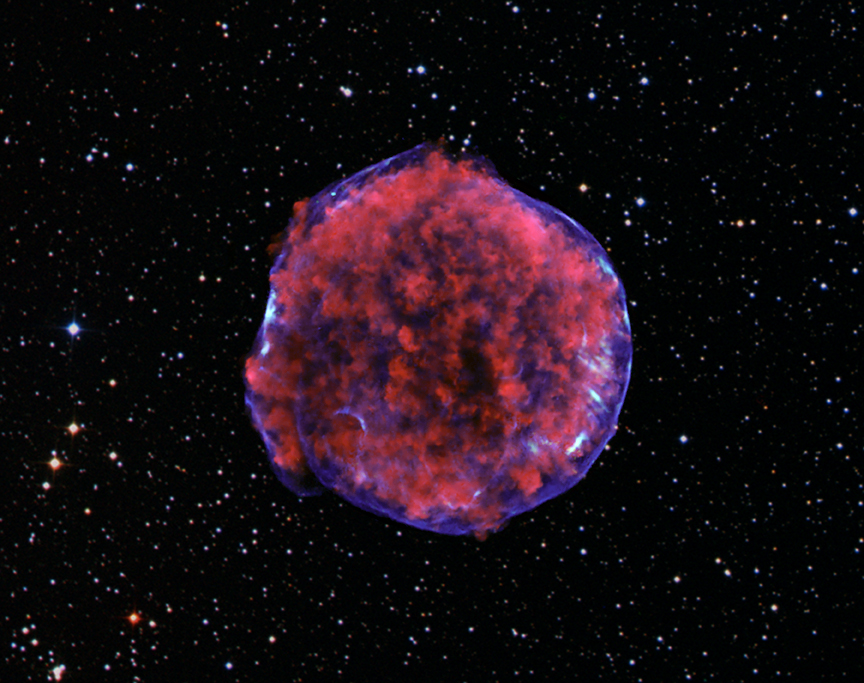What's the Origin of Exploding Stars? Two Right Answers

Astronomers have long had two competing explanations for the origin of exploding stars called Type Ia supernovas. A new study, to be published in the Astrophysical Journal, suggests both explanations might be at work.
Type Ia supernovas were used to discover dark energy and are used to measure the universe. They’re so bright we can see them from across the cosmos, and each acts like a "standard candle,” giving off a known luminosity. But astronomers don't know what star systems make Type Ia supernovas — what processes lead to the explosions.
"Previous studies have produced conflicting results. The conflict disappears if both types of explosion are happening," explained Smithsonian astronomer Ryan Foley, with the Harvard-Smithsonian Center for Astrophysics.
Type Ia supernovae are known to originate from white dwarfs, the aged, dense cores of dead stars.
In one model, called the single-degenerate model for a supernova, a white dwarf gathers material from a companion star until it reaches a tipping point where a runaway nuclear reaction begins and the star explodes. In the double-degenerate model, two white dwarfs merge and explode. The first type should have gas from the companion star around the supernova, while the second type should not.
"Just like mineral water can be with or without gas, so can supernovae," said Robert Kirshner, Clowes Professor of Astronomy at Harvard University and a co-author on the study.
The researchers studied 23 Type Ia supernovae to look for signatures of gas around the supernovae, which should be present only in single-degenerate systems. They found that the more powerful explosions tended to come from "gassy" systems, or systems with outflows of gas. However, only a fraction of supernovae show evidence for outflows. The remainder seem to come from double-degenerate systems.
Sign up for the Live Science daily newsletter now
Get the world’s most fascinating discoveries delivered straight to your inbox.
"There are definitely two kinds of environments - with and without outflows of gas. Both are found around Type Ia supernovae," Foley said.
This finding has important implications for measurements of dark energy and the expanding universe. If two different mechanisms are at work in Type Ia supernovae, then the two types must be considered separately when calculating cosmic distances and expansion rates.
"It's like measuring the universe with a mix of yardsticks and meter sticks - you'll get about the same answer, but not quite. To get an accurate answer, you need to separate the yardsticks from the meter sticks," Foley explained.
This study raises an interesting question - if two different mechanisms create Type Ia supernovae, why are they homogeneous enough to serve as standard candles?
"How can supernovae coming from different systems look so similar? I don't have the answer for that," said Foley.











